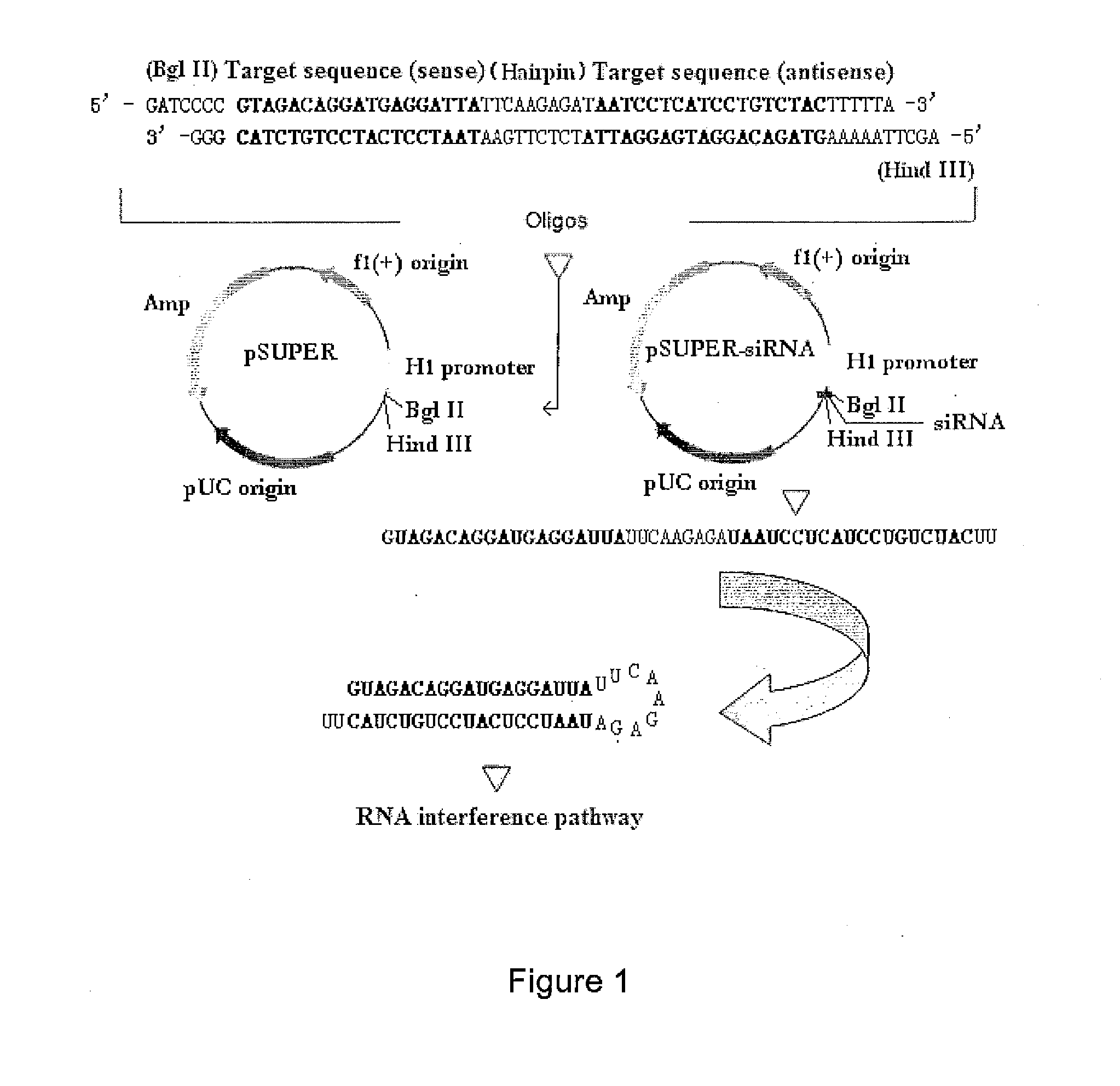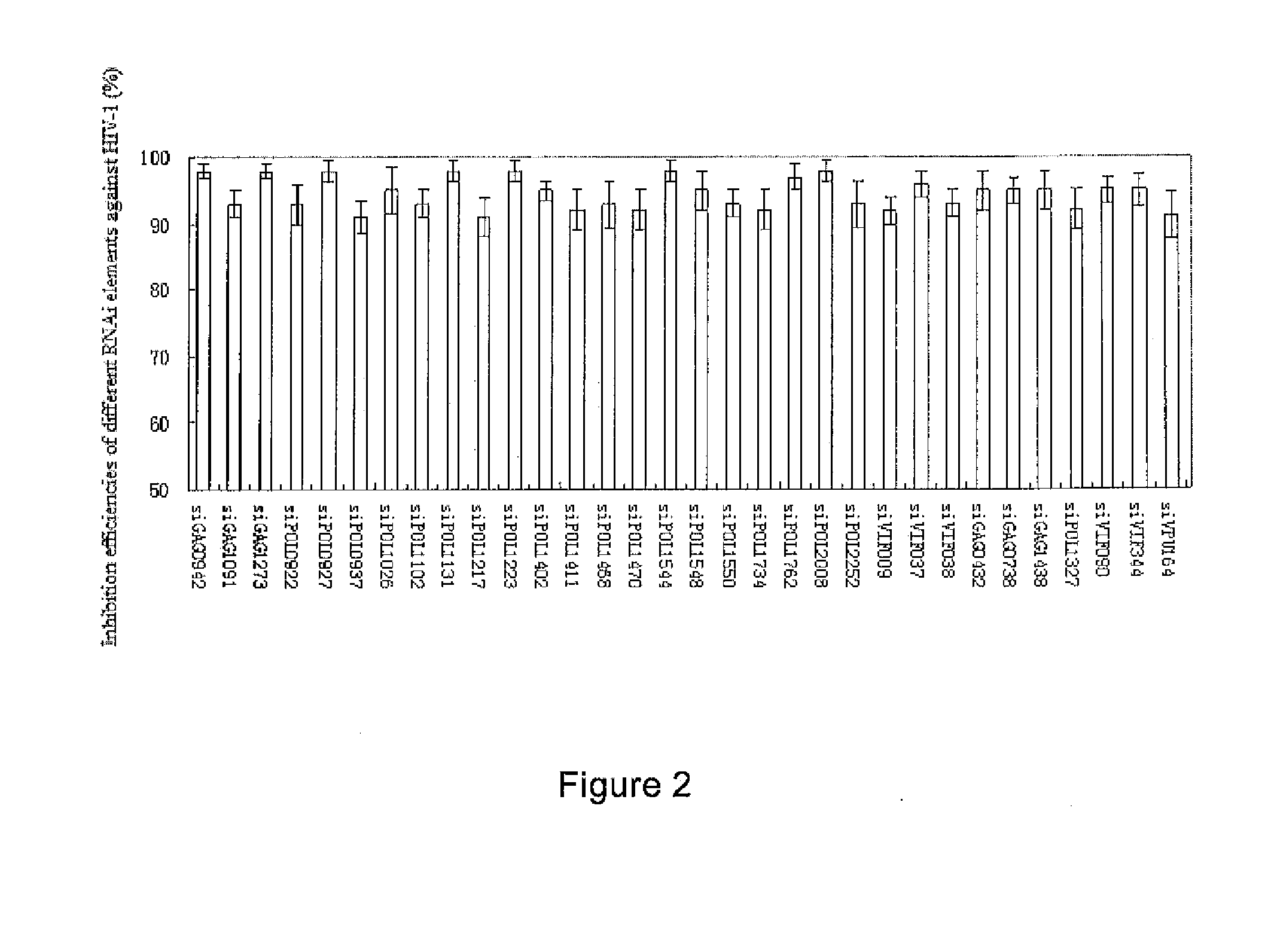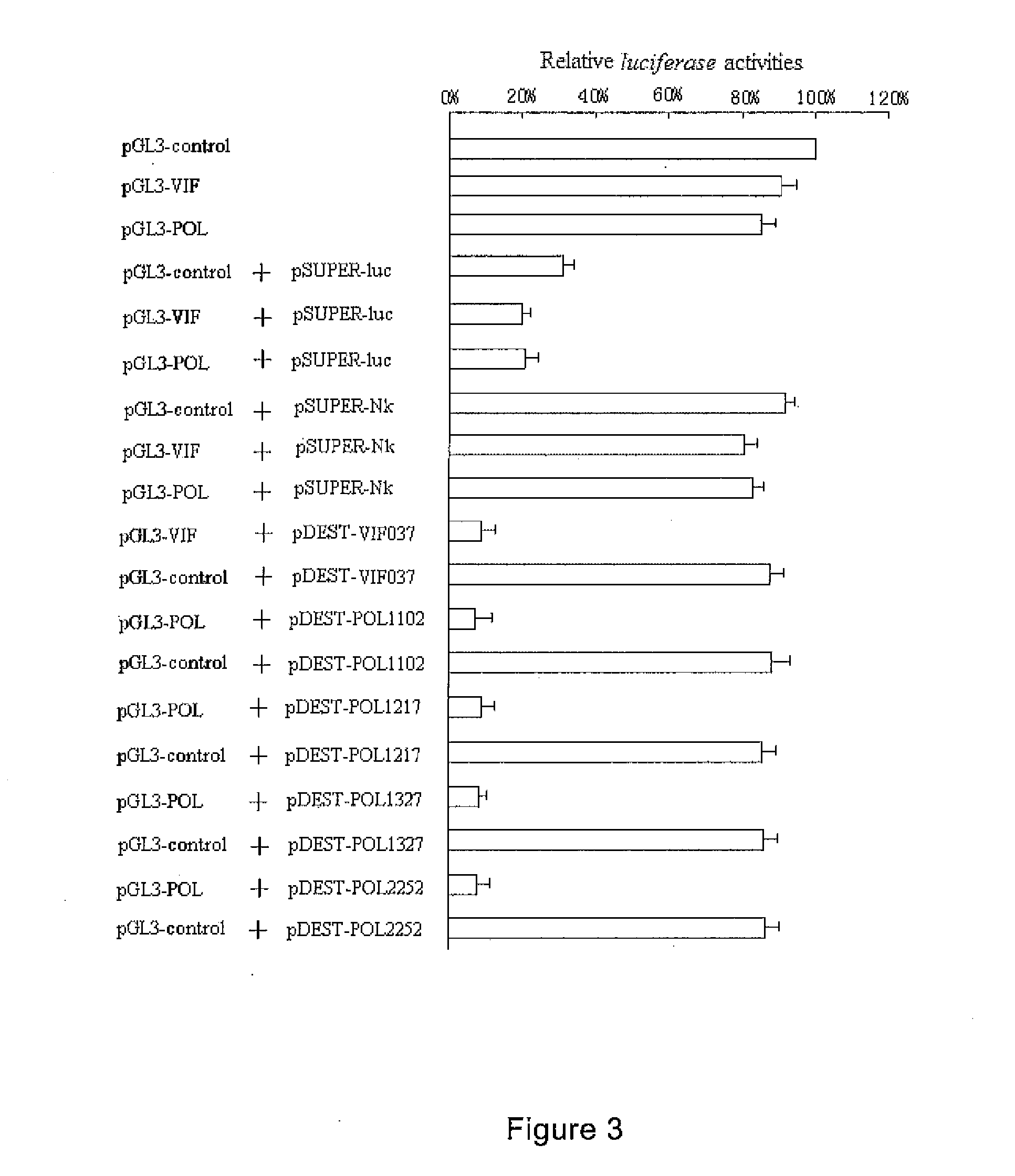RNA interference target for treating aids
a technology of interference target and target gene, applied in the field of molecular biology, cell biology and gene therapy, can solve the problems of inability to completely eradicate the virus in vivo, and the target gene expression of rna interference targets that meet the requirements of conventional design can be inhibited effectively
- Summary
- Abstract
- Description
- Claims
- Application Information
AI Technical Summary
Benefits of technology
Problems solved by technology
Method used
Image
Examples
example 1
Design and Construction of the siRNA Expression Plasmid
Design of the RNA interference target sequence targeting HIV was carried out by:selecting a highly conservative region for the design of the siRNA sequence by “DNA walking” with HIV reference sequence as a target sequence;conducting BLAST search in the GenBank with the preliminarily selected siRNA sequence; andselecting sequences that have three or more different bases from non-targeting sequences as candidate sequences.
Construction of the siRNA expression plasmid: the expression vector of the siRNA is pSUPER vector (oligoengine company Cat. No VEC-PBS-0001 / 0002). For more information about the construction procedure, please refer to Experimental Protocol for the pSUPER vector from the company (www.oligoengine.com). A brief construction procedure is shown in the FIG. 1. Primers carrying the RNA interference sequence were synthesized, complementary primers were annealed and then ligated into the pSUPER vector digested with BgIII ...
example 2
Screening by Co-Transfection Assay for a RNA Interference Target which Can Effectively Inhibiting HIV
pNL4-3 plasmid (from Pasteur Institute; may also use other HIV-1 infectious cloning plasmid), a HIV-1 infectious cloning plasmid, has an ability to express HIV viral proteins and viral particles after being transfected into suitable Mammalian cells (for example, 293FT cells). P24 is a capsid protein of the HIV virus, which can indicate the expression level of the virus protein and virus particle by detecting the content of the p24 protein in the supernatant of the cell culture, and is positively correlated with the virus titer. Therefore, the efficiency of different siRNAs in inhibiting the replication of HIV-1 can be determined by co-transfecting the siRNA expression plasmids with HIV infectious cloning plasmid (pNL4-3 plasmid) in the 293FT cells, and detecting the expression level of p24 protein in the cells after co-transfection.
293FT cells (Invitrogen, Catalog #R700-07) were cult...
example 3
Construction of the Expression Vector and the Lentivirus Packaging Vector Expressing siRNA
The expression vector of the lentivirus system pDEST-MR (patent application number: 200510112917.1; Publication Number: CN1948475) used in this example comprises the MGMT (P140K) gene controlled by the mPGK promoter and an expression cassette for expressing siRNA controlled by the H1 promoter.
Method for Constructing the Expression Vectors pDEST-VIF037, pDEST-POL1102, pDEST-POL1217, pDEST-POL1327, pDEST-POL2252:
Gene fragments VIF037, POL1102, POL1217, POL1327, POL2252 (including as examples the RNA interference target sequences siVIF037 (SEQ ID NO: 24), siPOL1102 (SEQ ID NO: 8), siPOL1217 (SEQ ID NO: 10), siPOL1327 (SEQ ID NO: 29), siPOL2252 (SEQ ID NO: 22) shown in example 2, but may also include other RNA interference target sequences provided by the present invention) were synthesized respectively, and Age I site was added at the 5′ end of the fragments, Sma I site was added...
PUM
| Property | Measurement | Unit |
|---|---|---|
| length | aaaaa | aaaaa |
| molecular structure | aaaaa | aaaaa |
| nucleic acid sequence analysis | aaaaa | aaaaa |
Abstract
Description
Claims
Application Information
 Login to View More
Login to View More - R&D
- Intellectual Property
- Life Sciences
- Materials
- Tech Scout
- Unparalleled Data Quality
- Higher Quality Content
- 60% Fewer Hallucinations
Browse by: Latest US Patents, China's latest patents, Technical Efficacy Thesaurus, Application Domain, Technology Topic, Popular Technical Reports.
© 2025 PatSnap. All rights reserved.Legal|Privacy policy|Modern Slavery Act Transparency Statement|Sitemap|About US| Contact US: help@patsnap.com



